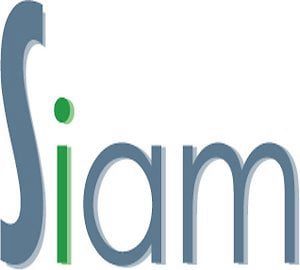ECHA identifies certain brominated flame retardants as candidates for restriction

Photo: PxHere
ECHA identifies certain brominated flame retardants as candidates for restriction – ECHA has published its regulatory strategy for flame retardants. It identifies aromatic brominated flame retardants as candidates for EU-wide restriction. This would minimize human and environmental exposure to these persistent, potentially bioaccumulative and toxic substances.
Persistent in the environment and potentially toxic
Aromatic brominated flame retardants, such as polybrominated diphenyl ethers, are generally persistent in the environment. Many, such as decabromodiphenyl ether, are also known or suspected to be toxic and to accumulate in humans and animals. Their release could be minimized by EU-wide restriction.
Some preliminary work required
Some preliminary work is needed before a possible restriction proposal. This work may include a waste stage assessment to determine if hazardous substances will be released when products containing flame retardants are dismantled, recycled or disposed of. It may also include an evaluation of the availability of suitable alternative substances or materials.
The scope of the restriction
The scope of the restriction could include all aromatic brominated flame retardants that have been or will be confirmed as persistent, bioaccumulative and toxic (PBT). Or very persistent and very bioaccumulative (vPvB) via harmonized classification or identification as substances of very high concern (SVHC).
Aliphatic brominated or organophosphorus-based
For many aliphatic brominated and some organophosphorus-based flame retardants, further data are needed to determine if a restriction is needed. These data are expected to be available from 2024 and ECHA proposes to re-evaluate the situation for these groups in 2025.
Various flame retardants
No regulatory action is recommended for various non-halogenated subgroups of flame retardants. For example, consider certain organophosphorus-based flame retardants, as no or low risk has currently been identified for these substances. Regulatory action is already in place or initiated for chlorinated flame retardants.
REACH restrictions can be initiated by EU member states or by the European Commission, which can request ECHA to prepare a restriction proposal.
Restrictions Roadmap
The strategy includes ECHA’s assessment of regulatory needs for halogenated (including brominated) and organophosphorus flame retardants, which account for about 70% of the organic flame retardant market. The strategy was announced in the Restrictions Roadmap under the EU Chemicals Strategy for Sustainability.
Aim of the strategy
The strategy identifies flame retardants, their potential hazards and information gaps. It aims to avoid regrettable substitution through grouping and to give companies more predictability through greater transparency of potential regulatory actions. Flame retardants other than those based on halogen or organophosphorus will be further evaluated in future regulatory needs assessments (ARNs).
More information
- Regulatory Strategy for Flame Retardants [PDF][EN]
- Regulatory needs list assessment
- Working with groups
Source: ECHA
Also Read: CLP EU vs. UK: What’s different and what can we expect?
Reservation
This information has been compiled with the greatest possible care, in some cases from different information sources. (Interpretation) errors are not excluded. No legal obligation can therefore be derived from this text. Everyone dealing with this subject has the responsibility to delve into the matter!
